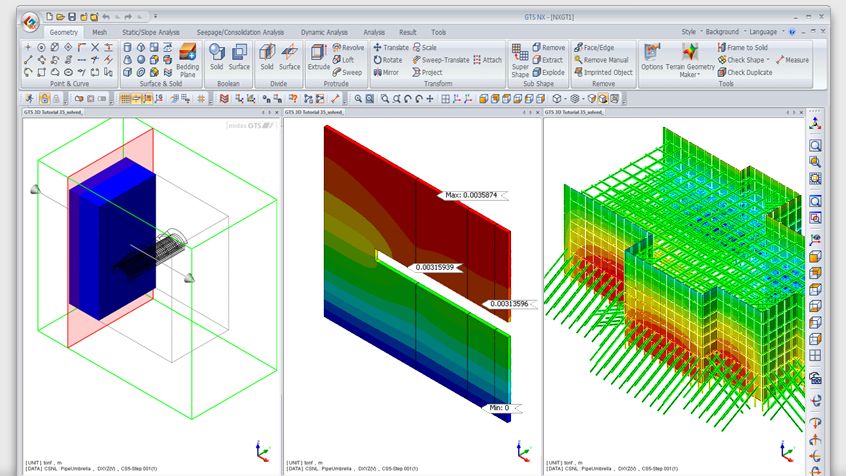EvComplex Models. Simple Modeling
Create intricate mesh sets with unprecedented ease
GTS NX also incorporates a hybrid mesh generation function that creates mesh set that use an optimal combination of hexahedron and tetrahedral elements. The main advantage of using hexahedron elements is that they generate comparatively more accurate stress results than tetrahedral elements; and the advantage of using tetrahedral elements is that they are more effective for modeling sharper curves and corners of complex geometry . GTS NX is capable of utilizing both tetrahedral and hexahedron elements without any significant loss in modeling or analysis speed.
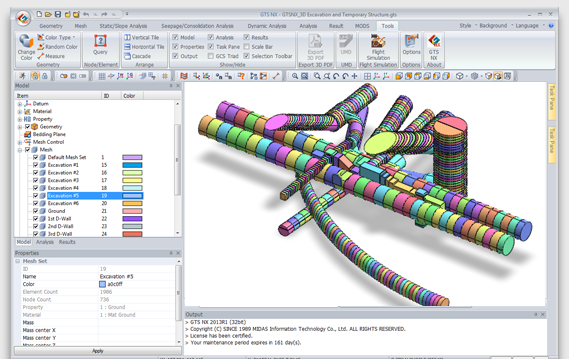
Accurately Simulate the Terrain of Your Project Sites
Generate the most detailed contour models with just a few simple steps
Project sites that contain complex contour surfaces can take hours to model with basic CAD-based commands. Typically idealizations are made in the interest of time, which in turn leads to a decrease in accuracy of the final analysis. GTS NX features a high-end Terrain Geometry Maker (TGM) that automatically converts topographic maps into editable surfaces. With the TGM you can easily generate intricately detailed 3-dimensional contour surfaces within seconds.
GTS NX is also equipped with a Bedding Plane Wizard that enables you to model uneven soil strata with ease. You can directly utilize your soil profile by entering the boring log data for several coordinates. The program the will then automatically extrapolate the changes in soil levels between each point. This feature makes it possible to create models that more accurately represent in-situ ground conditions and thus makes it possible to obtain results that are more accurate than those obtained through models that conservatively assume level soil strata conditions.
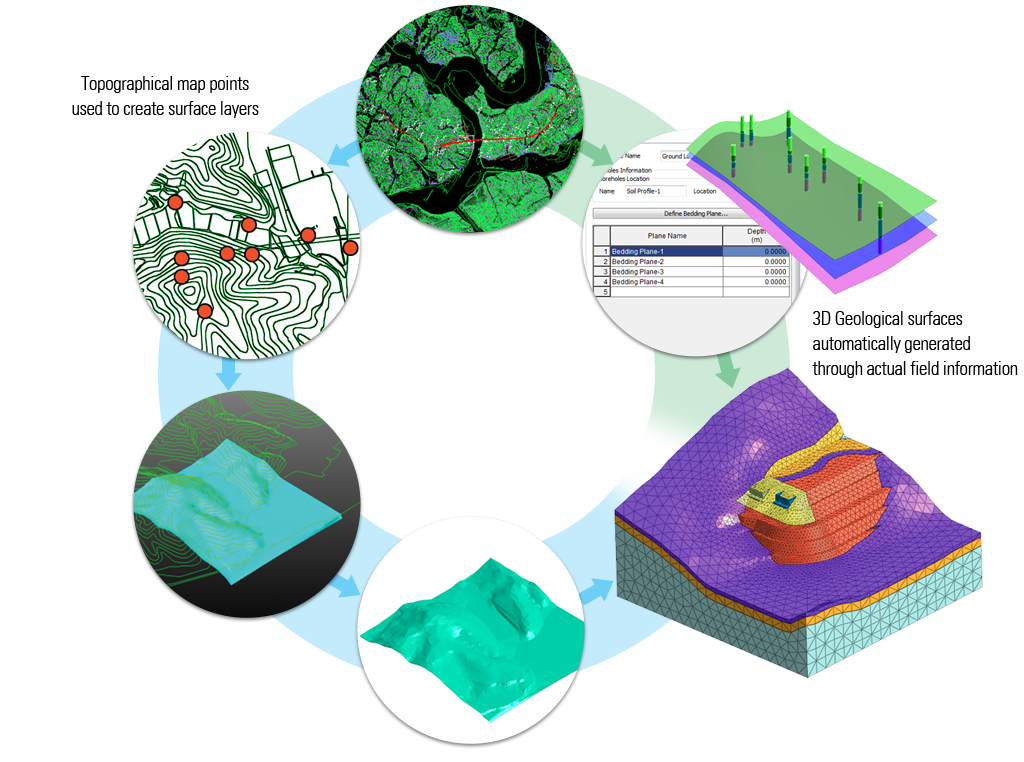
Instant CAD File Conversion
Effortlessly turn your AutoCAD drawings into GTS models
Engineers who have their projects drawn on CAD often find that they need to redraw their entire project on the analysis software when it comes time to model their design. GTS NX enables you to import your CAD drawings directly into the program. This feature completely eliminates the need to recreate existing drawings on the program and will thus save you considerable amounts of time and effort. GTS NX also has CAD-based commands that are similar to the standard CAD modeling interfaces that are most typically used by engineers. This eliminates the need to learn a new and unfamiliar interface and makes it easy for all engineers to create their project drawings and revisions solely with the software.
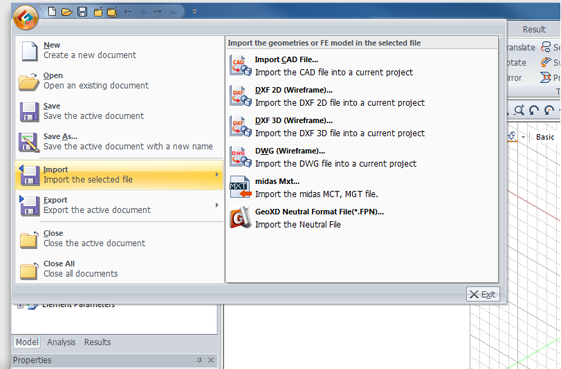
Solutions for every project
GTS can handle any geotechnical application
The use of multiple geotechnical programs creates the need to learn the unique interface of each program. Even more inefficiencies arise when there is a need to perform various analyses for the same project. For example, dam and levee projects often require seepage, settlement, slope stability, and seismic analyses to be calculated. The same also applies to foundation and retaining wall projects that require soil structure interaction as well as stress deformation analyses to be performed. Most geotechnical programs can only perform one analysis type, which creates the need to tediously create the same project model for several programs. With GTS NX you will no longer need to rely on several different geotechnical programs to perform various analyses. Instead you will be able to use GTS NX to perform any type of geotechnical analysis application .GTS NX can perform both single and group pile interaction as well as complex tunnel analysis in either 2D or 3D. Linear static analysis, seepage, soil structure interaction, SRM slope stability analysis and a wide range of dynamic analysis applications can be done as well.Moreover, your efficiency will be greatly increasedby the ability to run multiple analysis types on a single model file.
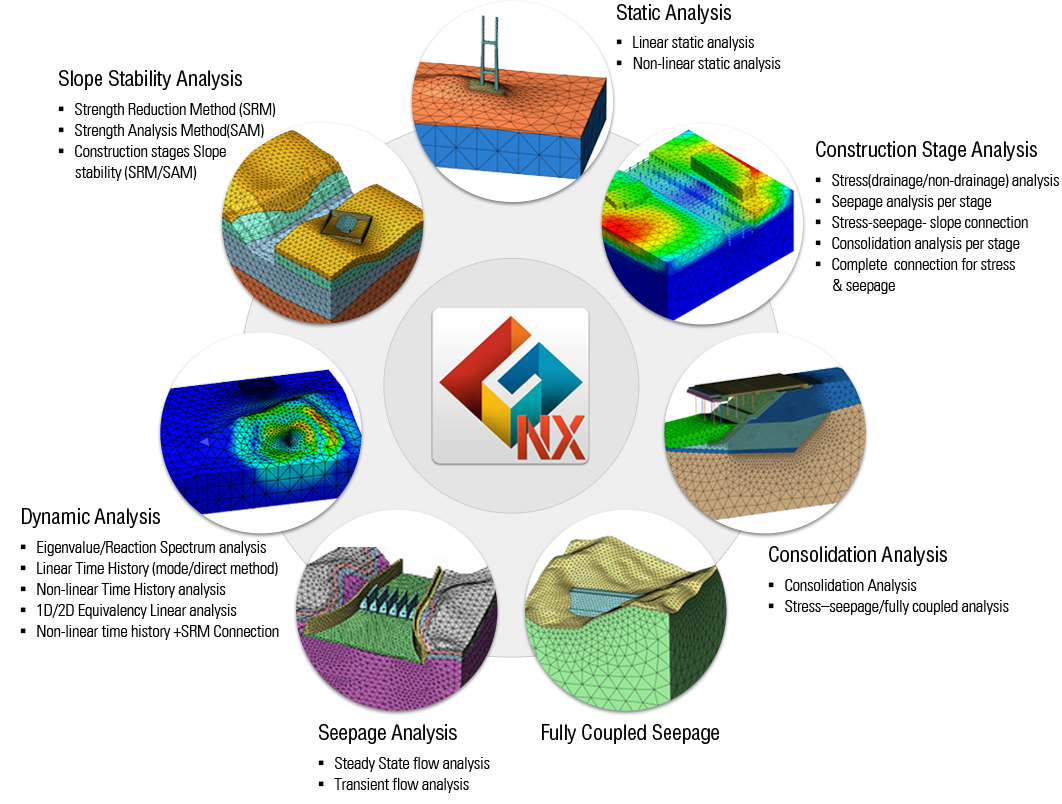
High-end Analysis made easy
Generate detailed soil-structure interaction results without all the extra effort
A study of soil structure interaction is essential for the design of group pile foundations, slopes with structural reinforcements, and seismic analysis of high-rise buildings and the sub-structures of multi-span bridges. Many finite element analysis programs have soil-structure interaction analysis capabilities but their modeling functionality is limited for complex geometry. The analysis functionality can also be difficult and time-consuming as well, especially for programs in which don't have input options that have been designed to expedite the parameter entry process.
Thus soil structure interaction analysis is often neglected because of the complexity of its modeling and analysis processes. GTS NX streamlines these processes so that even engineers without extensive experience with soil structure interaction will be able to perform the analysis and create safer and more optimized designs that are not possible to create through the use of more conventional methods.
GTS NX enables you to use various types of interface elements to create an accurate soil structure interaction simulation. These interface elements make it possible to easily model soil structure interaction regardless of geometric complexities. GTS NX will then calculate the resulting displacements, stress distributions and friction.
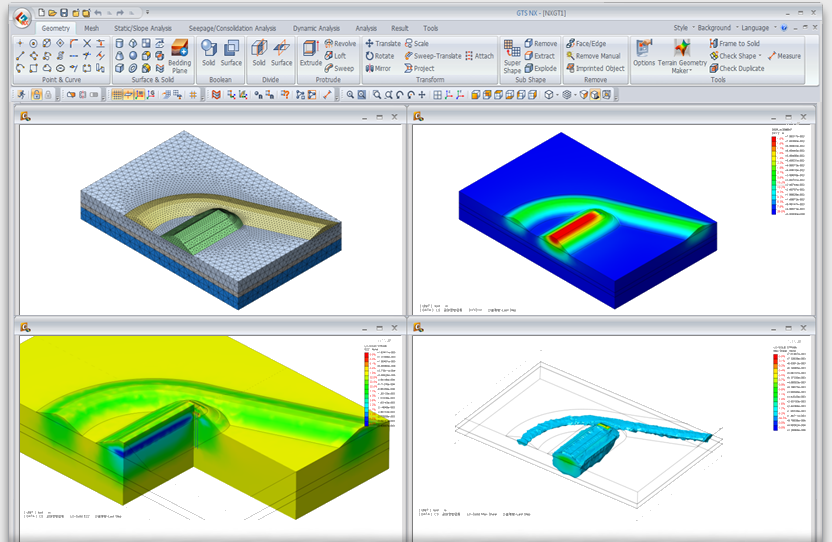
A Higher Level of Construction Stage Analysis
Use just one model file for every construction stage analysis case you need
When performing construction stage analysis, it is often necessary to create multiple models to compare the effects of a variation of design considerations. This process is made particularly cumbersome by the need to open a separate model file for each analysis case. GTS NX overcomes this limitation by its unique ability to have multiple construction stage analysis cases modeled in a single file. This feature makes it possible to directly compare the results of various construction stage analysis cases and determine the optimal design for your project.
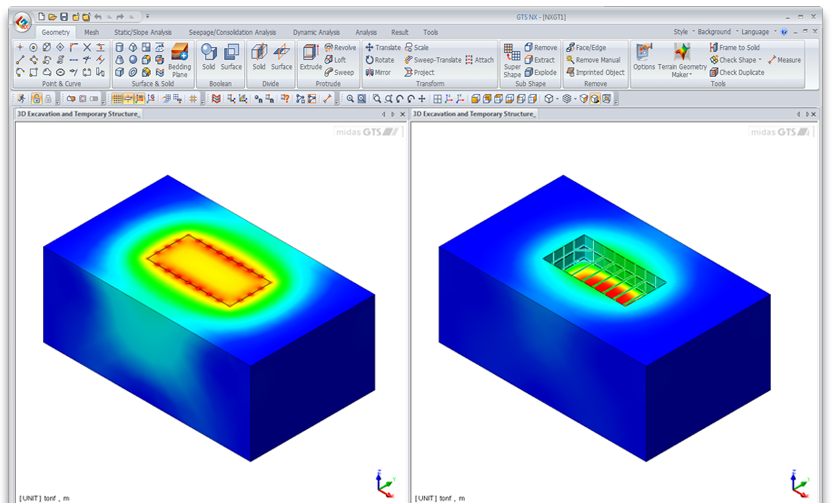
Crystal Clear Post-Processing
Results are seamlessly organized for your convenience
A common inefficiency of using finite element analysis software is having to painstakingly sort through extensive amounts of output data to extract the desired results. In most cases, creating the report can take just as long as the design and analysis process. To overcome this inefficiency, GTS NX features a state of the art edge post-processing engine that makes it possible to quickly sort through extensive finite element analysis outputs and create beautifully detailed and high quality reports. The post-processor renders richly colored 3D contour plots that provide detailed visual representations of the results. The post-processor also includes fully customizable filters so that you can easily extract your desired results based on construction stages, time history analysis, coordinates, and various other criteria. All results are neatly and clearly organized in both graph and spreadsheet formats. The result data can then be organized in a PDF file through an advanced report generator that enables you to directly create your report through the post-processing window. With the report generation functions, you will be able to create high quality reports with unprecedented levels of convenience quality and efficiency, thus freeing up more time for you to devote to other high priority tasks.
